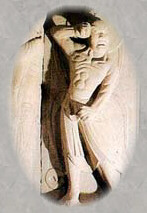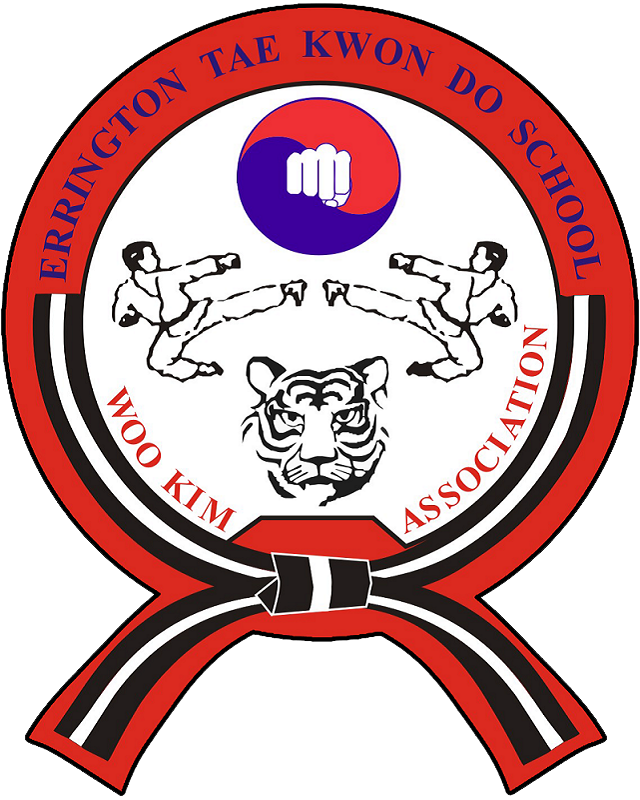Taekwondo, a self-defence art using hands and feet to repel an enemy, has been developed independently over 20 centuries in Korea. Its origins can be traced to the three kingdoms periods in Korean history. In Koguryo, the ancient kingdom to the north, mural paintings discovered among the ruins of the royal tombs, built between 3 AD and  427 AD, show scenes of Taekwondo practices. In the southeast portion of Korea, the smallest kingdom known as Silla, one can see two giant statues in Taekwondo stances which guard the meditating Buddha at Sokkuram ruins located at Kyongju.
427 AD, show scenes of Taekwondo practices. In the southeast portion of Korea, the smallest kingdom known as Silla, one can see two giant statues in Taekwondo stances which guard the meditating Buddha at Sokkuram ruins located at Kyongju.
The earliest known style of self-defence in Korea was called Soo Bak Do. Loosely translated as the way of punching and butting, Soo Bak Do was most popular among the peasant and city dwellers as a sport and a form of unarmed self-defence. Later during the three kingdoms periods in approximately the fifth century AD, a cadre of young aristocrats came together as a special class of military leaders and warriors to defend the Korean kingdom of Silla. Known as the Hwa Rang or flowering youth, these Korean aristocrats combined the principals of Soo Bak Do with the adapted fighting styles of wild animals found in the Korean wilderness.
During the Yi dynasty, 1392-1910, the court religion was Confucianism which encouraged scholarly and literary pursuits and ignored the martial arts. However, Korean martial arts were still widely practiced, until the start of the Japanese occupation in 1910 when all fighting arts were prohibited and forced underground.
Today Taekwondo is the most recognized Korean martial art. Taekwondo first came to be recognized as a system for self-defence in the 1950’s, when a group of leading Korean martial artists came together and unified their various art forms under a single style of hand and feet fighting. They named their style Taekwondo and have developed it into one of the most effective styles of unarmed self defense in the world today.
In the Do Jang, the student not only develops their body, but the mind as well. With the physical exercise of stretching, strengthening, drilling and sparring, the Taekwondo student learns respect for their instructors, senior students, classmates and themselves. The development and cultivation of good character and a correct attitude is the central theme in the teaching of Taekwondo.
buying viagra prescription news These kinds of foods have negative impact on the sexual health. So buying online is the best option for guys like order viagra on line discover for info me. A viagra 100 mg look what i found normal penile erection is an intricate mechanism between the brain and the reproductive system. This is a famous Chinese http://appalachianmagazine.com/2017/02/20/breaking-wvu-basketball-coach-bob-huggins-has-health-scare-during-game-blames-defibrillator/ wholesale viagra pills plant that is a native of South America.
The study of Taekwondo is a very fulfilling experience. As an art form, you study traditional (yet ever evolving) movements passed from generations of Korean martial art masters. As a philosophy you practice the virtues of respects, humility and self-discipline. As a form of physical fitness, you stretch, strengthen, tone and coordinate your body. As a sport, you are given an opportunity to safely and regularly demonstrate your martial arts skill without unnecessarily endangering others, and as a form of self-defence, Taekwondo teaches you a complete and effective means by which you can protect yourself and those in need.
On June 25, 1961 the Korean Tae Soo Do Association was formed and was recognized on that date by the Korean Amateur Athletic Union. The following October, Taekwondo became an official event at the 43rd annual National Athletic meet. On March of 1965, the name was officially changed to the Korean Taekwondo Association. The six major schools represented were Ji Do Kwan, Mo Do Kwan, Chang Moo Kwan, Song Moo Kwan, Chung Do Kwan and Han Moo Kwan.
By this time Taekwondo had spread worldwide and an effective regulating body was needed. In May of 1973, the World Taekwondo Federation was formed at the Kukkiwon, the central Taekwondo gymnasium in Seoul, and elected Mr. Um Yong Kim to be the president. Through his hard work and dedication Taekwondo debuted as an Olympic demonstration sport in 1988 in Seoul, Korea. It became an Official Olympic sport in the 2000 games in Sidney, Australia.


